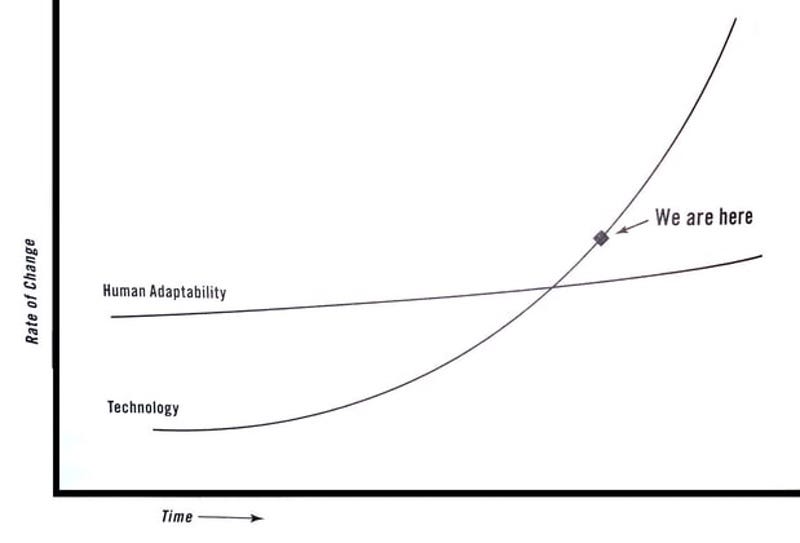Rolling Stone’s Matt Taibbi first flagged the graph in a blog post today. The graph shows technology (which is never defined) and its rate of change (which is never defined) and human adaptability (which is never defined). It’s the kind of thing you might see scrawled in feces in Ted Kaczynski’s prison cell but it’s now been conveniently committed to paper and given a much wider audience.
...
The truth is that technological adoption isn’t necessarily speeding up. Just look at consumer goods like television. In 1950 just 8 percent of Americans had a TV. Four years later, in 1954, a whopping 59 percent of American households had a TV. Here we are on the cusp on 2017 and I’m having a hard time thinking of any consumer technology that made any comparable jump since 2012.
Or let’s go back further. The Great Depression was a desperate time for most Americans. But technological leaps didn’t stop. Look at the mechanical refrigerator as another example of rapid change in a relatively short period of time. Just 8 percent of American households had a fridge in 1930. By the end of the decade roughly 44 percent had one. People much smarter than myself have argued that refrigeration did more to shape the United States than most other technologies of the 20th century. Yes, smartphones are revolutionary. But refrigeration tech arguably changed America as much, if not more.
The adoption rates of early and mid-20th Century consumer technology are even more impressive when you consider infrastructure. I'd argue that the percentage of American households with mechanical refrigerators in 1939 is, in many ways, less relevant than the percentage of electrified households with refrigerators that year. By the same token, a large part of the country didn't get TV stations until the mid-50s and yet we still hit 59%. Viewed this way, consumers were considerably more eager to adopt new technology in the mid-2oth Century than they are today.

No comments:
Post a Comment